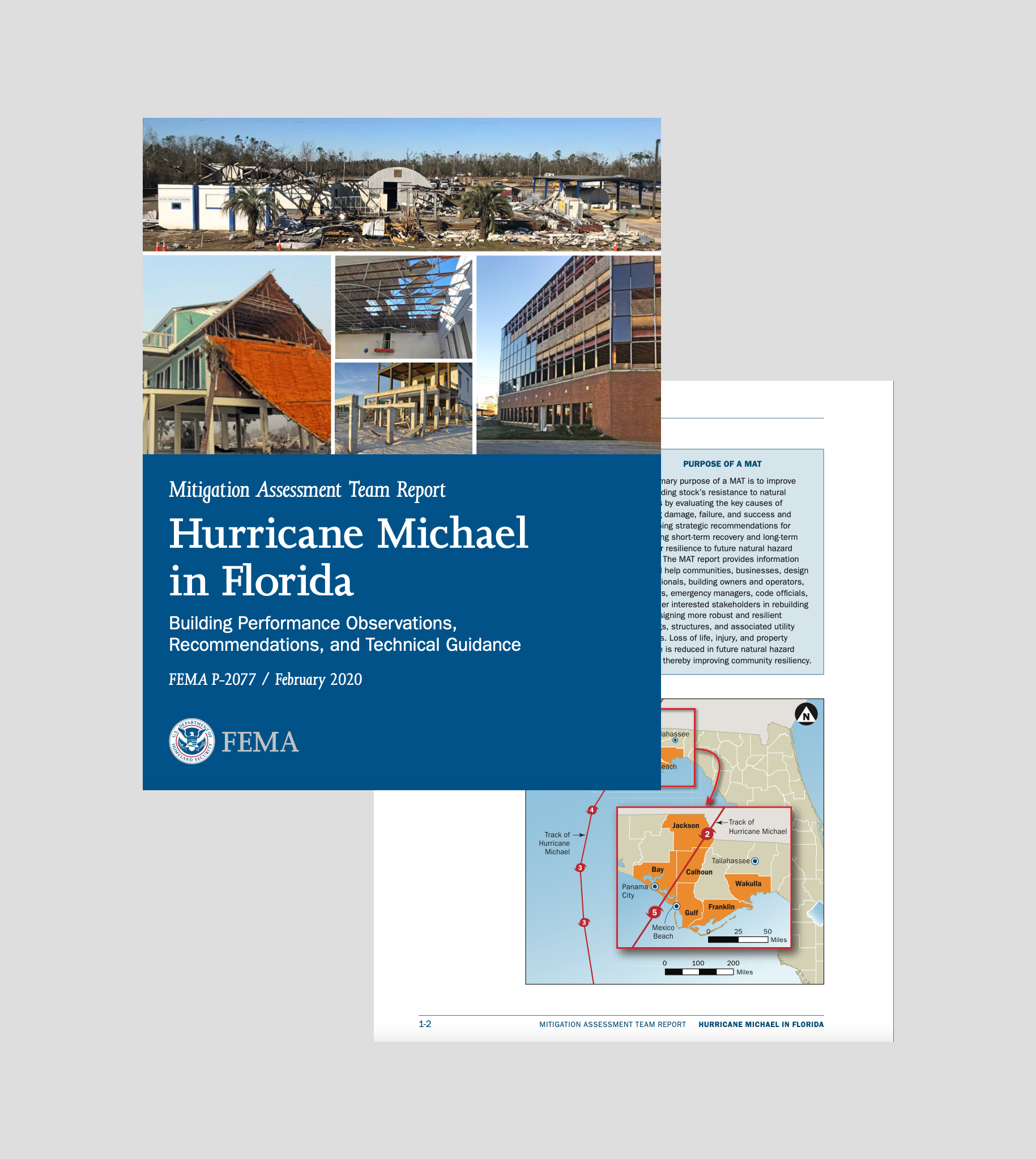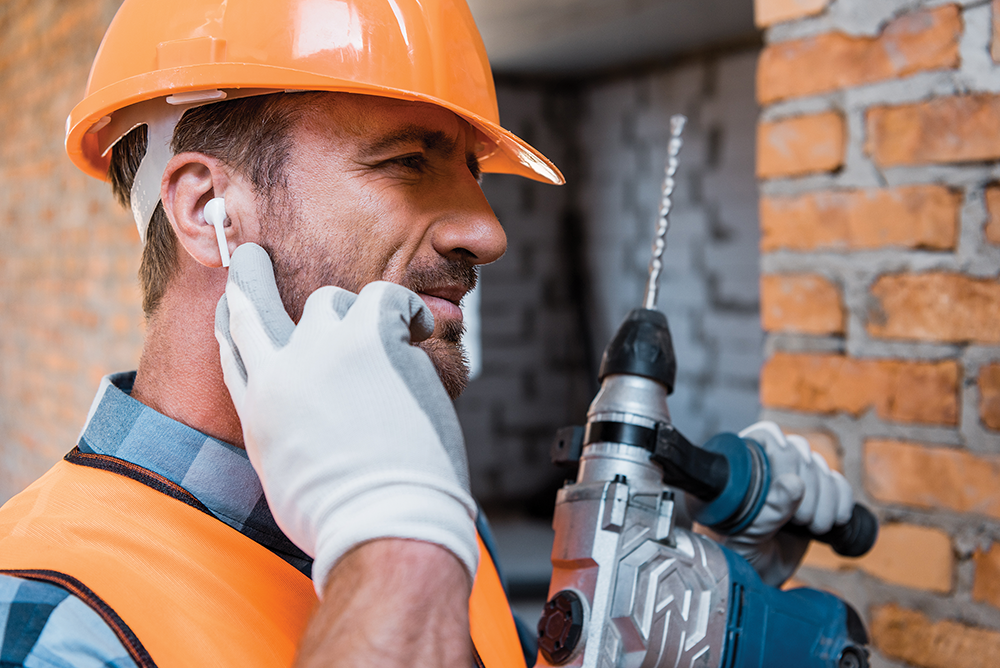SPRI revises wind design standard
SPRI has revised ANSI/SPRI WD-1, “Wind Design Standard Practice for Roofing Assemblies,” and announced the standard has been reaffirmed by the American National Standards Institute.
SPRI developed ANSI/SPRI WD-1 as a reference for the design, specification and installation of nonballasted single-ply roof systems. ANSI/SPRI WD-1 provides methodology for selecting an appropriate roof system to meet the wind-uplift pressures calculated in accordance with ASCE 7-16, “Minimum Design Loads and Associated Criteria for Buildings and Other Structures.” The standard previously was revised and reaffirmed in 2014.
ANSI/SPRI WD-1 can be downloaded at www.spri.org.
FEMA releases hurricane mitigation assessment report

|
The Federal Emergency Management Agency has released a mitigation assessment team report about Hurricane Michael, a Category 5 hurricane that struck the Florida panhandle in October 2018.
At the request of FEMA’s joint field office in Florida, FEMA’s Federal Insurance and Mitigation Administration’s building science branch deployed a mitigation assessment team to affected areas in Florida in October 2018 and January 2019. The mitigation assessment team included national, regional, state and private sector experts specializing in structural, coastal and civil engineering; architecture; building construction; and emergency management code development and enforcement.
The mitigation assessment team assessed the performance of hundreds of coastal and inland residential properties, critical facilities such as hospitals and police stations, municipal and public buildings, and seawalls, as well as hurricane evacuation shelters. Based on its findings, the mitigation assessment team developed 69 recommendations for federal, state and local governments; design and construction industries; and building code and standards organizations. When implemented, the recommended actions will help reduce injuries and mitigate building damage caused by future natural hazard events in Florida and elsewhere.
The report is available here.
Smartphones and headphones pose job-site hazards

|
Some construction companies are developing policies to combat workers’ growing use of smartphones and headphones on job sites, according to www.constructiondive.com.
Frank Trujillo, vice president of Miller & Long Concrete Construction, Bethesda, Md., says the company’s managers tell employees earbuds and headphones are not acceptable on job sites. However, workers don’t always realize they are still wearing earbuds when entering a site because they are so used to wearing them all the time.
There is no specific federal regulation prohibiting the use of headphones on a construction site, but the Occupational Safety and Health Administration issued a letter of interpretation in September 2019 providing clarification. In the letter, OSHA said headphone entertainment on a construction site is permissible at managerial discretion “unless such use creates or augments other hazards apart from noise,” such as when music masks environmental sounds that need to be heard, “especially on active construction sites where attention to moving equipment, heavy machinery, vehicle traffic and safety warning signals may be compromised.”
Associated Builders and Contractors Vice President of Workforce Development Safety Health and Environmental Greg Sizemore says no smartphone use should be allowed on active construction sites and urges his members to train employees regarding the appropriate use of technology on job sites. Workers may argue they use music to drown out loud construction noises, but an OSHA spokesperson says the goal for job-site ear protection is to minimize sound—not eliminate it. Employers must protect workers’ ears with ear protective devices when certain sound levels are reached on job sites, and headphones and earbuds do not fulfill that requirement.
Trujillo also experiences problems with employees using smartphones to take photos on-site; his company has clients such as the U.S. Navy that prohibit photos on job sites. Additionally, smartphones have been used to document sensitive incidents or accidents by potential whistleblowers or disgruntled employees. Miller & Long Concrete Construction safety leaders are developing a formal policy regarding smartphone and headphone use on job sites; in the meantime, managers tell employees if they must check their phones or answer calls, they must exit the job site and clock out to do so.
“If you’re in construction you need to pay attention to what you’re doing,” Trujillo says.
COMMENTS
Be the first to comment. Please log in to leave a comment.